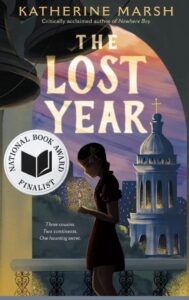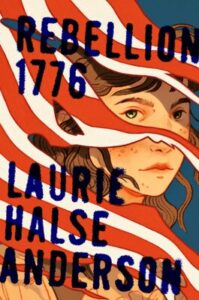Literacy coach Jennifer Sniadecki shares results from a recent experiment using read-alouds as a reading intervention strategy with middle schoolers.
By Jennifer Sniadecki
 As students enter middle school, traditionally teachers expect them to choose reading materials, read independently to complete assignments, and grow skills during core classes, according to the grade-level curriculum. However, this idealistic view of reading is not realistic anymore.
As students enter middle school, traditionally teachers expect them to choose reading materials, read independently to complete assignments, and grow skills during core classes, according to the grade-level curriculum. However, this idealistic view of reading is not realistic anymore.
Ever since the pandemic began in 2020, students seem to have fallen behind in reading independence, and now schools require a different approach to learning to read. The focus on “science of reading” initiatives suggests that older students benefit from a more comprehensive approach to teaching reading, including reading aloud in middle school classrooms.
“Reading aloud gives students the opportunity to hear the sound and rhythm of the language. As the teacher thinks aloud about what he or she is reading, the students begin to understand the connections between the words on the page and what they mean (Fogarty, 2007).”
When an adult reads aloud (or out loud), there are many benefits for students, including increased vocabulary, increased comprehension of complex texts, and increased analytical skills. Reading aloud as a part of middle school interventions proves that students can build proficiency while also building a love of reading. Let me share some recent experience.
Listening to Language
Common Core Standard (CCSS.ELA-Literacy.SL.7.1.C): Pose questions that elicit elaboration and respond to others’ questions and comments with relevant observations and ideas that bring the discussion back on topic as needed.
 As their teacher read The Lost Year by Katherine Marsh aloud, students asked many questions about life in Ukraine in the 1930s, especially about the Holodomor (famine) and the main character, Matthew. Hearing the book read aloud, students focused on their wonderings and asked why, when, and how events happened for Matthew’s grandmother and extended family.
As their teacher read The Lost Year by Katherine Marsh aloud, students asked many questions about life in Ukraine in the 1930s, especially about the Holodomor (famine) and the main character, Matthew. Hearing the book read aloud, students focused on their wonderings and asked why, when, and how events happened for Matthew’s grandmother and extended family.
When students didn’t have to focus on decoding and comprehending heavy text as they listened to the story, they could discuss the text on a deeper level and collaborate with peers to gain answers and understandings. The author used dialogue, vivid details, and shocking settings to draw the readers in and keep them captivated. Reading this book aloud brought the class together, experiencing the story as more than just a historical fiction text.
Increased Vocabulary
Common Core Standard (CCSS.ELA-Literacy.RI.7.4): Determine the meaning of words and phrases as they are used in a text, including figurative, connotative, and technical meanings; analyze the impact of a specific word choice on meaning and tone.
 A middle school science teacher read June Almeida, Virus Detective! by Suzanne Slade (illustrated by Elisa Paganelli) to some students studying the pandemic. Students noted words that seemed important and words they didn’t understand: passion, observant, electron microscope, virus, antibodies, and many more.
A middle school science teacher read June Almeida, Virus Detective! by Suzanne Slade (illustrated by Elisa Paganelli) to some students studying the pandemic. Students noted words that seemed important and words they didn’t understand: passion, observant, electron microscope, virus, antibodies, and many more.
Because the teacher pointed out sentences with figurative language during the read-aloud time (“Sadness swallowed the family like a deep, dark hole.”), students were able to find more in other texts later. Rajani LaRocca’s picture book, A Vaccine Is Like a Memory (illustrated by Kathleen Marcotte) became a paired text during class. Students even began to write better sentences because of their exposure to language.
Increased Comprehension of Complex Tests
Common Core Standard (CCSS.ELA-Literacy.RL.7.3): Analyze how particular elements of a story or drama interact (e.g., how setting shapes the characters or plot).
Common Core Standard (CCSS.ELA-Literacy.RL.7.9): Compare and contrast a fictional portrayal of a time, place, or character and a historical account of the same period as a means of understanding how authors of fiction use or alter history.
 Building to longer, more complex texts packs a curricular punch when teachers use novels as read alouds in the classroom. When eight-graders recently revisited the American Revolution, they enjoyed the new Laurie Halse Anderson title, Rebellion 1776.
Building to longer, more complex texts packs a curricular punch when teachers use novels as read alouds in the classroom. When eight-graders recently revisited the American Revolution, they enjoyed the new Laurie Halse Anderson title, Rebellion 1776.
Using the audiobook, readers fell in love with story again as they explored the Siege of Boston in 1776 and met Elsbeth Culpepper, the 13-year-old smallpox survivor and newest teen character to cheer for. This book is filled with poignant vocabulary, strong setting, clashing characters, and inner and outer conflicts that make one’s head spin.
Teachers who use engaging novels like this one enhance students’ school experiences and celebrate success with their classes.
Increased Analytical Skills
Common Core Standard (CCSS.ELA-Literacy.CCRA.R.3): Analyze how and why individuals, events, or ideas develop and interact over the course of a text.
One of the new favorite read aloud titles to discover this year is Don’t Trust Fish by Neil Sharpson and illustrated by Dan Santat. Offering no spoilers about this book is intentional. Try reading this one with some middle school students.
Read alouds matter for lifelong learning
Sometimes the simplest explanation is the best explanation. Reading aloud to students in middle school settings benefits them in ways that matter for lifelong learning.
Yes, we want students to succeed in class and on standardized tests, and meet standards for a particular grade level, but we also want students who know how to use reading skills to enjoy reading. Reading aloud provides students with opportunities to experience success through thinking alongside their teachers and peers.
The more we help them develop their own thinking skills, the better off they will be as students and as successful people.
Among Jennifer’s other MiddleWeb articles is Picture Books Support Summertime Learning.
Jennifer Sniadecki is currently the Media Literacy Facilitator for South Bend Community Schools and a professional development presenter from South Bend, Indiana. She is an avid reader and will read anything her friends recommend. Jennifer’s passion is promoting her favorite authors’ upcoming books on social media. Check out her posts on Instagram (reading_teacher_writes) and LinkedIn, or follow her blog, www.readingteacherwrites.com.


